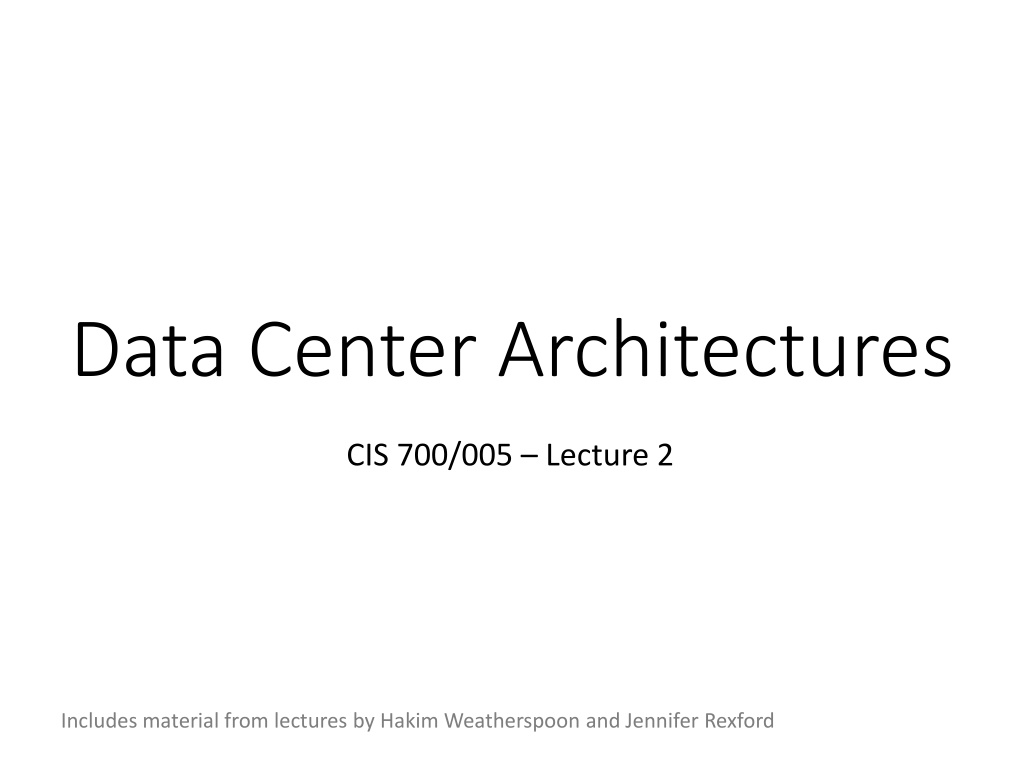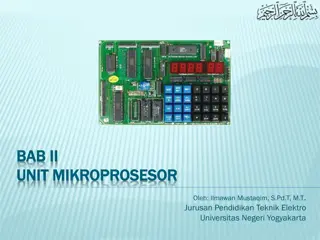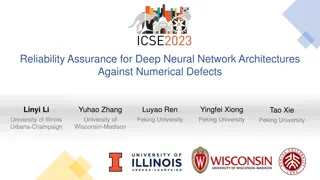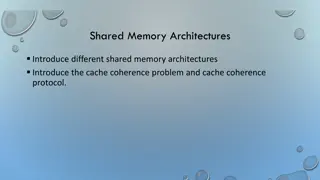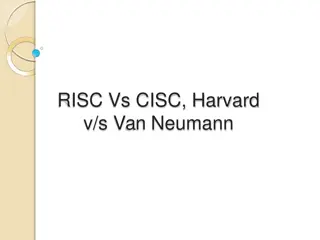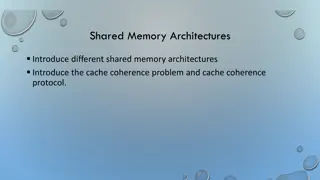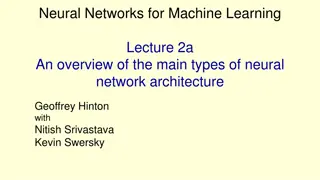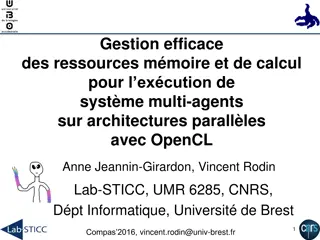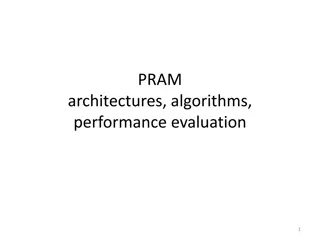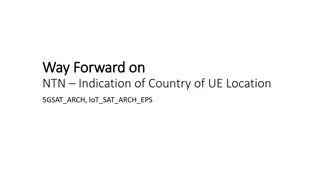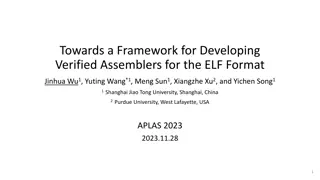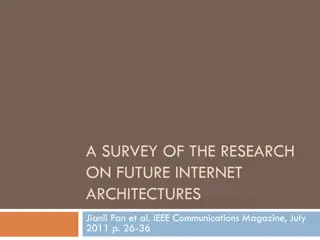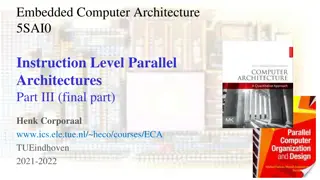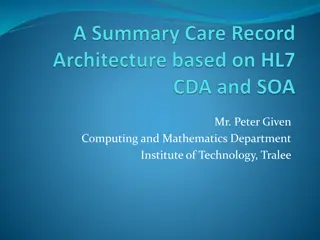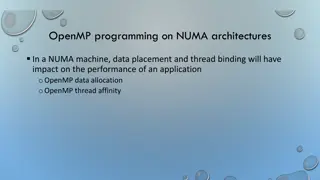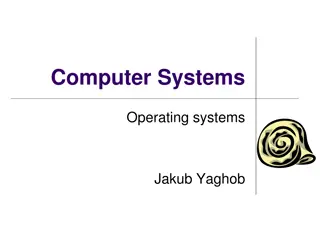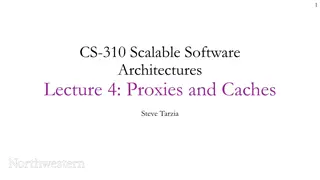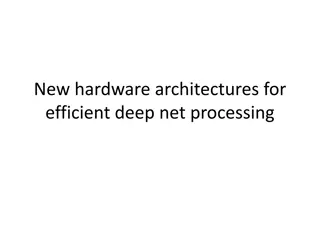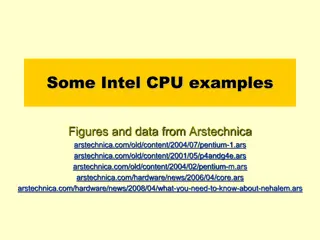Data Center Architectures Overview
Explore traditional data centers, limitations like oversubscription and fault tolerance, scalable commodity network architectures, history lessons on Clos networks, and the fat-tree architecture in this informative lecture material that covers various design aspects and considerations for efficient data center setups.
Download Presentation

Please find below an Image/Link to download the presentation.
The content on the website is provided AS IS for your information and personal use only. It may not be sold, licensed, or shared on other websites without obtaining consent from the author.If you encounter any issues during the download, it is possible that the publisher has removed the file from their server.
You are allowed to download the files provided on this website for personal or commercial use, subject to the condition that they are used lawfully. All files are the property of their respective owners.
The content on the website is provided AS IS for your information and personal use only. It may not be sold, licensed, or shared on other websites without obtaining consent from the author.
E N D
Presentation Transcript
Data Center Architectures CIS 700/005 Lecture 2 Includes material from lectures by Hakim Weatherspoon and Jennifer Rexford
Traditional Data Centers Internet Data Center Layer-3 router Core Aggregation Layer-2/3 switch Layer-2 switch Access Servers
Limitation (1): Oversubscription Ratio of the worst-case achievable aggregate bandwidth among the end hosts to the total bisection bandwidth of a particular communication topology Lower the total cost of the design Typical designs: factor of 2:5:1 (400 Mbps)to 8:1(125 Mbps)
Limitation (2): Fault tolerance Oversubscription + Bigger routers less routers at the top of the tree a core router failure has high blast radius
A Scalable, Commodity Data Center Network Architecture Mohammad Al-Fares, Alexander Loukissas, Amin Vahdat Scalable interconnection bandwidth 1:1 oversubscription Economies of scale Backwards compatibility
History Lesson: Clos Networks (1953) Emulate a single huge switch with many smaller switches Add more layers to scale out
History Lesson: Clos Networks (1953) Emulate a single huge switch with many smaller switches Add more layers to scale out
History Lesson: Clos Networks (1953) Emulate a single huge switch with many smaller switches Add more layers to scale out
Fat-tree Architecture K-ary fat tree: three-layer topology (edge, aggregation and core) each pod consists of (k/2)2 servers & 2 layers of k/2 k-port switches each edge switch connects to k/2 servers & k/2 aggr. switches each aggr. switch connects to k/2 edge & k/2 core switches (k/2)2 core switches: each connects to k pods
Obligatory Network Questions How do I address destinations? Hierarchical IP addresses for scalability [PodNumber].[SwitchNumber].[Endhost] How does a switch route packets? Assumption: every routing table entry has 1 output Route downward using prefix (for scalability) Route upward using suffix (for load balancing)
Routing Optimizations 1. Flow classification Classify flows (e.g., src, dest, port #s) Move around a small set of flows as needed 2. Flow scheduling Keep track of large, long-lived flows at the edge switches Assign them to different links
VL2: a scalable and flexible data center network A. Greenberg, J. R. Hamilton, N. Jain, S. Kandula, C. Kim, P. Lahiri, D. A. Maltz, P. Patel, and S. Sengupta Let s take the single big switch model to the limit: Uniform high capacity Performance isolation: Layer-2 semantics:
Virtual Layer 2 Switch (VL2) 1. L2 semantics 2. Uniform high capacity 3. Performance isolation
VL2 Goals and Solutions Approach Solution Objective Name-location separation & resolution service 1. Layer-2 semantics Employ flat addressing 2. Uniform high capacity between servers Guarantee bandwidth for hose-model traffic Flow-based random traffic indirection (Valiant LB) Enforce hose model using existing mechanisms only 3. Performance Isolation TCP Hose : each node has ingress/egress bandwidth constraints
